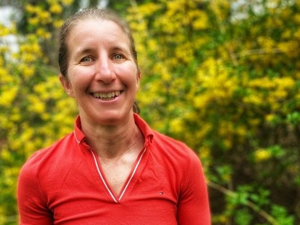Health
Sudbury Sleep Coach Offers Solutions for Obstructive Sleep Apnea

Individuals struggling with sleep may be unaware that they are experiencing a condition known as Obstructive Sleep Apnea (OSA). This serious sleep disorder involves repeated interruptions in breathing during sleep, significantly impacting both nighttime and daytime functioning. Tierney Gunthorpe, a sleep apnea coach based in Sudbury, Canada, is dedicated to improving sleep quality for her clients, offering support both locally and globally through her website, www.thesleepapneacoach.com.
Understanding OSA requires recognizing its severity, which is classified based on the number of events recorded on the apnea-hypopnea index (AHI). Gunthorpe explains that individuals can fall into three categories: mild (5-15 events per hour), moderate (15-30 events), and severe (over 30 events). “It’s essential to be careful when interpreting these numbers,” Gunthorpe emphasizes. Even those diagnosed with mild sleep apnea may experience frequent episodes that do not meet the duration criteria, potentially indicating a condition called Upper Airway Resistance Syndrome (UARS).
The causes of OSA are diverse. Gunthorpe identifies factors such as tongue position, the collapse of the roof of the mouth, or throat obstruction as contributing to the condition. Enlarged tonsils or adenoids can also play a significant role. Importantly, sleep apnea can affect individuals of any age or body type. Gunthorpe states, “You don’t need to be overweight to have it. Babies can even have it; it doesn’t discriminate.”
Diet and lifestyle choices are also critical factors. Gunthorpe notes that modern eating habits, which often involve less chewing due to the prevalence of processed foods, can impact jaw development. She points out that insufficient jaw development can lead to a retruded jaw position, which may contribute to breathing difficulties during sleep. Additionally, anatomical issues such as a deviated septum or a history of nasal injuries may exacerbate the problem.
For many, the first line of treatment for OSA is Continuous Positive Airway Pressure (CPAP) therapy. However, Gunthorpe highlights that not everyone qualifies for this treatment, particularly those with mild cases. “There are alternatives,” she suggests, including oral appliances, breathing retraining, and lifestyle modifications that can alleviate or even eliminate symptoms. “You don’t need to snore to have sleep apnea,” she adds, explaining that microarousals during sleep can be equally damaging.
Gunthorpe warns against relying on sleeping pills as a solution, noting that they do not address underlying issues. “It’s estimated that between 40-60% of untreated OSA patients suffer from chronic insomnia, particularly among women,” she states. Hormonal changes can exacerbate these symptoms, especially during perimenopause and menopause, when airway collapsibility increases and sensitivity to carbon dioxide changes.
Despite common misconceptions, many individuals—including younger women—may not receive proper referrals for sleep studies. Gunthorpe explains that traditional criteria often overlook those who do not fit the typical profile of an OSA patient. “Most doctors only send you for a sleep study if you snore, are overweight, or have a thick neck,” she notes.
Addressing OSA involves a multi-faceted approach that considers both physical structure and lifestyle choices. Gunthorpe encourages individuals to evaluate their overall health and make necessary adjustments. “Optimizing your airways from head to toe can improve nighttime breathing. Losing weight can help those who are overweight, but many with sleep apnea are not overweight,” she explains.
Gunthorpe also advises against alcohol consumption before bedtime, as it can relax throat muscles and worsen apneic episodes. For those suspecting they may have OSA, Gunthorpe invites inquiries about their risk and potential solutions. “They can definitely reach out to me to see if they are at risk for sleep apnea or sleep disorder breathing,” she says.
To learn more or to seek assistance, visit Sudbury Home Physio at sudburyhomephysio.ca. The Local Journalism Initiative is made possible through funding from the federal government.
-

 Lifestyle2 months ago
Lifestyle2 months agoWinnipeg Celebrates Culinary Creativity During Le Burger Week 2025
-

 Health2 months ago
Health2 months agoMontreal’s Groupe Marcelle Leads Canadian Cosmetic Industry Growth
-

 Science2 months ago
Science2 months agoMicrosoft Confirms U.S. Law Overrules Canadian Data Sovereignty
-

 Education2 months ago
Education2 months agoRed River College Launches New Programs to Address Industry Needs
-

 Science2 months ago
Science2 months agoTech Innovator Amandipp Singh Transforms Hiring for Disabled
-

 Technology2 months ago
Technology2 months agoDragon Ball: Sparking! Zero Launching on Switch and Switch 2 This November
-

 Technology2 weeks ago
Technology2 weeks agoDiscord Faces Serious Security Breach Affecting Millions
-

 Technology2 months ago
Technology2 months agoGoogle Pixel 10 Pro Fold Specs Unveiled Ahead of Launch
-

 Science2 months ago
Science2 months agoChina’s Wukong Spacesuit Sets New Standard for AI in Space
-

 Technology2 months ago
Technology2 months agoWorld of Warcraft Players Buzz Over 19-Quest Bee Challenge
-

 Education1 month ago
Education1 month agoBrandon University’s Failed $5 Million Project Sparks Oversight Review
-

 Education2 months ago
Education2 months agoAlberta Teachers’ Strike: Potential Impacts on Students and Families
-

 Business2 months ago
Business2 months agoDawson City Residents Rally Around Buy Canadian Movement
-

 Technology2 weeks ago
Technology2 weeks agoHuawei MatePad 12X Redefines Tablet Experience for Professionals
-

 Business2 months ago
Business2 months agoNew Estimates Reveal ChatGPT-5 Energy Use Could Soar
-

 Science2 months ago
Science2 months agoXi Labs Innovates with New AI Operating System Set for 2025 Launch
-

 Technology2 months ago
Technology2 months agoFuture Entertainment Launches DDoD with Gameplay Trailer Showcase
-

 Technology2 months ago
Technology2 months agoInnovative 140W GaN Travel Adapter Combines Power and Convenience
-

 Technology2 months ago
Technology2 months agoGlobal Launch of Ragnarok M: Classic Set for September 3, 2025
-

 Business2 months ago
Business2 months agoBNA Brewing to Open New Bowling Alley in Downtown Penticton
-

 Business1 month ago
Business1 month agoRocket Lab Reports Strong Q2 2025 Revenue Growth and Future Plans
-

 Technology2 months ago
Technology2 months agoNew IDR01 Smart Ring Offers Advanced Sports Tracking for $169
-

 Technology2 months ago
Technology2 months agoArsanesia Unveils Smith’s Chronicles with Steam Page and Trailer
-

 Science2 months ago
Science2 months agoNew Precision Approach to Treating Depression Tailors Care to Patients










